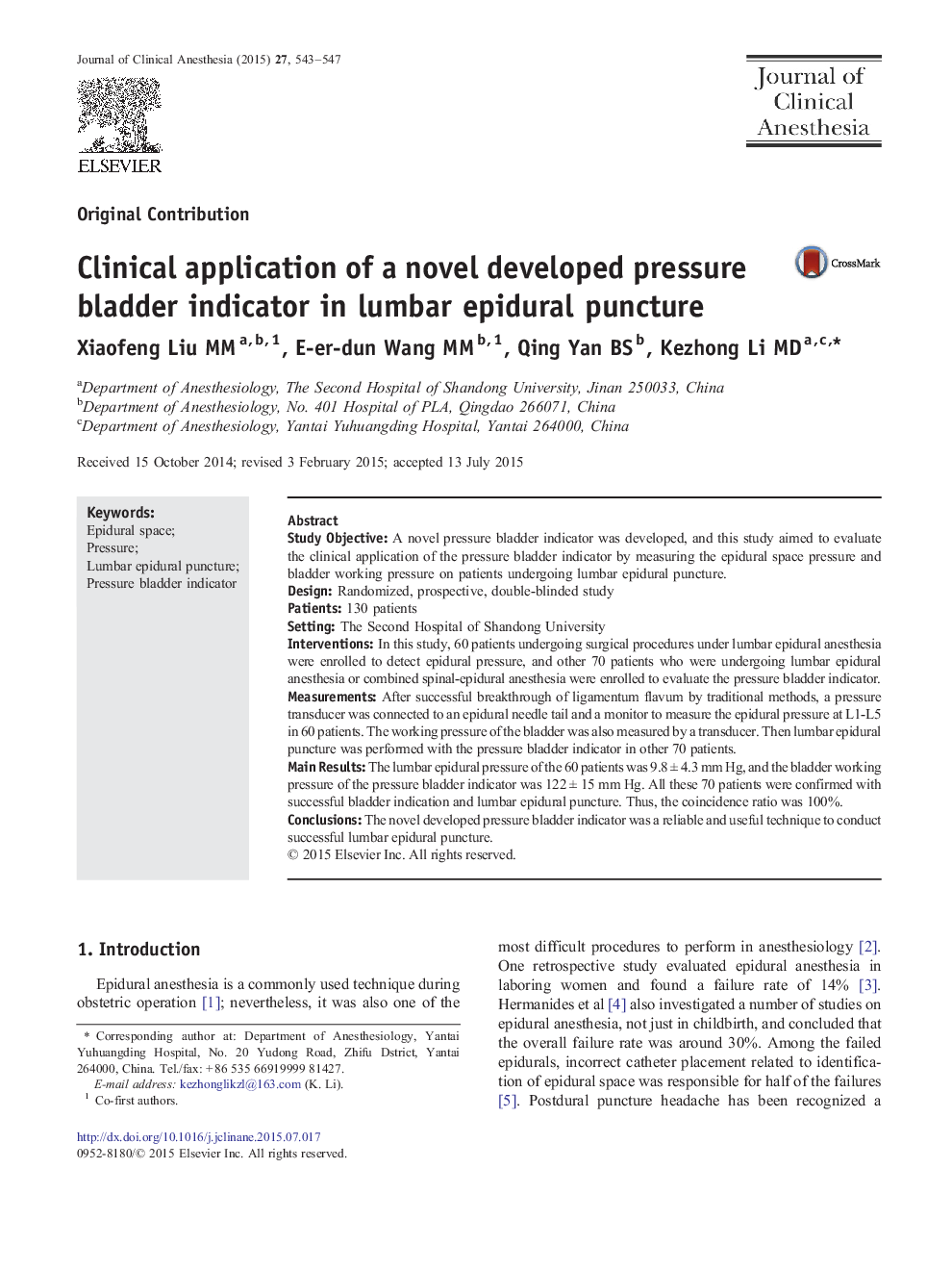| Article ID | Journal | Published Year | Pages | File Type |
|---|---|---|---|---|
| 2762489 | Journal of Clinical Anesthesia | 2015 | 5 Pages |
•The lumbar epidural pressure of the 60 patients was 9.8 ± 4.3 mm Hg.•The bladder working pressure of this pressure bladder indicator was 122 ± 15 mm Hg.•Lumbar epidural puncture was successful in all patients with this pressure bladder indicator.
Study ObjectiveA novel pressure bladder indicator was developed, and this study aimed to evaluate the clinical application of the pressure bladder indicator by measuring the epidural space pressure and bladder working pressure on patients undergoing lumbar epidural puncture.DesignRandomized, prospective, double-blinded studyPatients130 patientsSettingThe Second Hospital of Shandong UniversityInterventionsIn this study, 60 patients undergoing surgical procedures under lumbar epidural anesthesia were enrolled to detect epidural pressure, and other 70 patients who were undergoing lumbar epidural anesthesia or combined spinal-epidural anesthesia were enrolled to evaluate the pressure bladder indicator.MeasurementsAfter successful breakthrough of ligamentum flavum by traditional methods, a pressure transducer was connected to an epidural needle tail and a monitor to measure the epidural pressure at L1-L5 in 60 patients. The working pressure of the bladder was also measured by a transducer. Then lumbar epidural puncture was performed with the pressure bladder indicator in other 70 patients.Main ResultsThe lumbar epidural pressure of the 60 patients was 9.8 ± 4.3 mm Hg, and the bladder working pressure of the pressure bladder indicator was 122 ± 15 mm Hg. All these 70 patients were confirmed with successful bladder indication and lumbar epidural puncture. Thus, the coincidence ratio was 100%.ConclusionsThe novel developed pressure bladder indicator was a reliable and useful technique to conduct successful lumbar epidural puncture.
